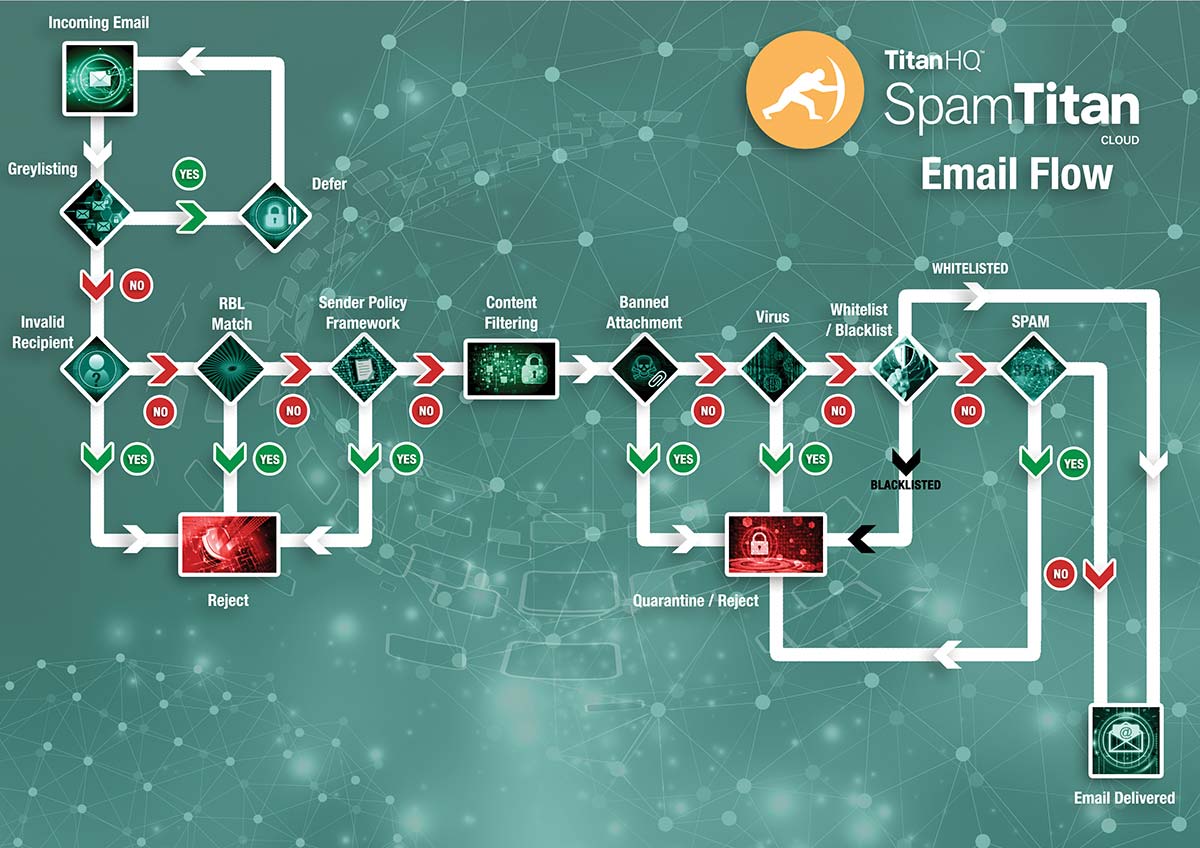All antispam solutions and spam filters check inbound messages for common spam signatures; however, it is also important to choose a solution that performs outbound email scanning. Outbound email scanning ensures spam emails, or emails containing malware, are not sent from an organization’s email accounts or domains.
Your employees would be unlikely to knowingly use their corporate email accounts to send spam emails, but malware infections can allow cybercriminals to gain access to email accounts and use them to send high volumes of spam email messages. Cybercriminals could also compromise email accounts and use an organization’s domain to send malware and ransomware to clients and customers.
Should this happen, it can have a seriously detrimental effect on an organization’s reputation and may result in corporate email accounts or an entire domain being blacklisted.
Blacklists are maintained by a number of organizations – spamhaus.org for example. Internet Service Providers (ISPs), web servers, and antispam solutions check these blacklists before allowing emails to be delivered to end users. If a particular IP address, email account, or domain is listed in one of the blacklist databases, emails sent from the domain, IP address or email account will not be delivered.
Blacklists are updated in real-time and contain many millions of blocked domains and email addresses that have been reported as having been used for unwanted activity such as the sending of spam emails. If emails are sent from a blacklisted account, domain, or IP address those emails will either be directed to a quarantine folder, deleted, or will simply be rejected.
If a business has its domain added to a spam blacklist important emails to clients and customers will not get through. This can prove costly, as real estate firm Keller Williams has recently discovered.
Blacklisted Domains and Email Accounts Can Prove Costly for Businesses
Over the past few days, email messages sent from the kw.com domain used by Keller Williams have been rejected by AOL. Yahoo has been blocking emails from the kw.com account for some time. The problem appears to be the addition of the kw.com domain to spam blacklists.
If a Keller Williams real estate agent needs to send an email to a customer who has an AOL or Yahoo account, it will not be delivered. Agents have therefore been forced to get customers to open Google email accounts in order to send online paperwork or documents requiring e-signatures.
The issue also affects online paperwork sent via the transaction management software program Ziplogix, with one Keller Williams agent also claiming Dotloop is also affected. Some agents at Keller Williams have reportedly had to send important paperwork for listings and sales via personal email accounts to ensure emails are delivered.
The AOL website explains that when domains have been flagged as being abusive, the server will be temporarily blocked until the spamming stops. Until a domain is removed from its blacklist, AOL account holders will be prevented from receiving emails from the blocked domain. Removing the domain from the blacklist can take up to a week.
Removing a domain from the 80+ commonly used spam blacklists can be a time-consuming task; furthermore, if spam emails are sent from the account again, the domain will simply be added to the blacklists once more.
Outbound Email Scanning Prevents the Blacklisting of an Organization’s Domain
Unlike many third-party antispam solutions, SpamTitan checks incoming email messages for spam signatures as well as performing outbound email scanning. If an email account has been compromised and is being used to send spam emails, if malware is sending spam, those messages will be blocked and will not be sent. Outbound email scanning is an important protection that will prevent an organization’s domain or email accounts from being used to send spam or malware.
Organizations can therefore avoid the embarrassment and reputation damage that results from being suspected as engaging in spamming or malware delivery. They can also rest assured that in addition to blocking 99.97% of inbound email spam, their domains and email accounts will not be added to spam blacklists.

